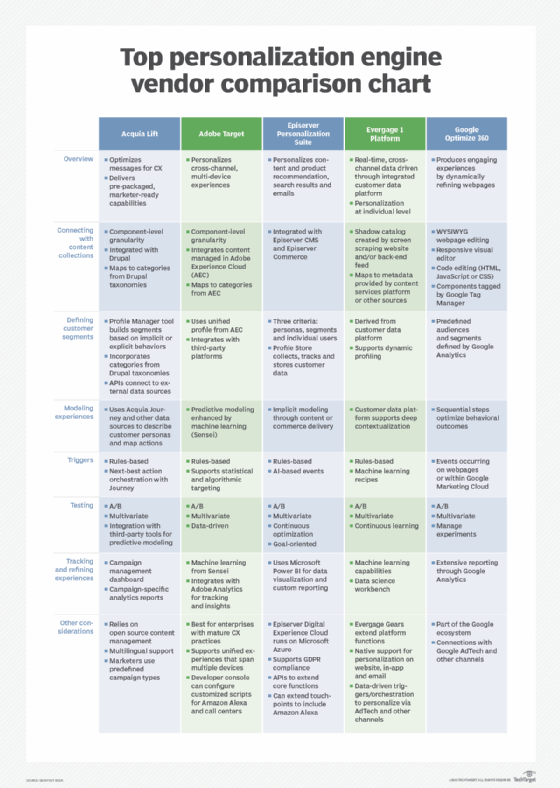
adam121 - Fotolia
Use data to create personalized content customers actually want
As customers demand authentic, personalized content, CX teams have turned to personalization engines. But without the right data, personalization engines cause more challenges.
The most important trend and biggest challenge for customer experience teams is content personalization. Sixty-seven percent of customers think brands should adjust content based on context, and 42% become annoyed when content isn't personalized, according to a 2018 study by Adobe.
The personalization engine is the market's response to customer demand for personalized content. The engine is a software component included in many enterprise commercial websites that matches site visitors to stored customer profiles and adjusts their online experiences according to historical and analytical data.
While personalization engines can help to provide that customized content, they can fall short of the end goal. Customers want content to feel not only personal but also authentic -- and they want a say in how that level of personalization is achieved.
Half of consumers regularly receive personalized content, but only 40% feel the content is truly personal, according to a 2018 Periscope by McKinsey survey. More than 90% of respondents are more likely to stick with brands that recognize them and provide offers and recommendations that seem personal, as reported in a Pulse Check 2018 study by Accenture. In that study, more than 80% also said they are OK with brands using their personal data to personalize content -- as long as the data is secure.
Personalization challenges
Personalization works. It gets customers' attention and increases the chances of a sale. However, brands struggle to create and deliver authentic personalized content with personalization engine software in these areas:
Forms of personalization. Personalization means different things to different people. There is professional personalization -- in line with my goals -- and private personalization -- things that I love. There is also casual personalization -- I like country music -- and more serious personalization -- I'm pregnant. Personalization engines offer no easy way to make these distinctions.
Audience segmentation. Typically, consumer audiences are segmented demographically by age, geography, gender etc. But audiences can also be divvied up by past behaviors, personality factors or political bias. Not many personalization engines can juggle these segmentations simultaneously. There is more to segmentation than identifying target audiences, and the composition of those audiences is not always obvious.
Scaling. CRM and email marketing platforms scale well, but content marketing systems generally do not. A personalization engine alone cannot solve this roadblock.
Invasiveness. Many consumers like to be recognized and catered to, but about 27% of consumers feel that personalization is invasive, according to the Accenture study. When a customer's brand experience is based on information they didn't intentionally share, it affects their trust of the brand.

Dig into customer data
Creating the personalized content that customers want begins with data. Demographic data is well-understood, and context data, such as device or browser, location and time or day, is easily obtained. But brands can also use behavioral data, such as transactional patterns over time, behaviors online, content accessed, purchase history and abandoned purchases. Psychographic data about customers' personality traits, beliefs and attitudes is also valuable.
Businesses should obtain as much data as possible in all of these categories and look for correlations. For instance, are there personality traits in the psychographic data that correlate to abandoned purchases? Is there marketing content that appeals to extroverts but not introverts? Are there demographic factors that map to purchases at certain times of day?
Organizations can address most content personalization challenges with a stronger command of the customer's data. The mode of personalization for a particular customer (professional, casual etc.) becomes obvious when behavioral data is matched to context. Different lines of segmentation become possible when demographic data is broken down by psychographic data.
Technology issues cannot be set aside. Scaling is paramount, meaning content management infrastructure must keep pace with customer experience; and strong, transparent customer controls on data privacy are essential.







